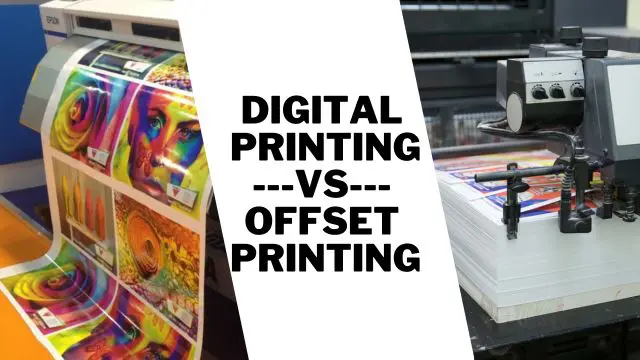Choosing between these two depends on several factors, including project specifications, budget, turnaround time and desired quality.
Here are some scenarios where offset printing may be preferred over digital printing:
Large Print Runs:
Offset printing is more cost-effective for large print runs due to lower per-unit costs as quantities increase.
Choose offset printing for projects requiring thousands or tens of thousands of copies, such as magazines, catalogues, or brochures.
High-Quality Printing:
Offset printing typically offers higher quality and greater colour accuracy compared to digital printing. Projects that demand precise colour matching, intricate details, or special finishes (e.g., spot UV, embossing) are better suited for offset printing.
Specialty Papers and Finishes:
Offset printing supports a wide range of paper stocks, including specialty papers and finishes such as textured, matte, or glossy.
Projects that require specific paper types or finishes, such as luxury packaging or fine art prints, benefit from the versatility of offset printing.
Consistent Colour Reproduction:
Offset printing provides consistent colour reproduction throughout a print run, ensuring uniformity across all copies. Projects with strict brand guidelines or colour-critical elements, such as corporate brochures or marketing materials, benefit from the reliability of offset printing.
Customisation and Variable Data:
While digital printing excels in variable data printing (VDP) and customization, offset printing is less suited for these capabilities.
Projects that require extensive personalization or variable data, such as direct mail campaigns or event invitations, are better suited for digital printing.
Long-Term Durability:
Offset printing uses oil-based inks that penetrate the paper, resulting in prints with greater durability and resistance to fading over time. Projects intended for long-term use, such as product packaging, signage, or archival materials, benefit from the longevity of offset printing.
Prepress Requirements:
Offset printing requires more extensive prepress setup compared to digital printing, including plate-making and colour calibration.
Projects with complex layouts, large image files, or multiple colour separations are more efficiently handled by offset printing’s prepress capabilities.
Economies of Scale:
Offset printing becomes more cost-effective as the print quantity increases due to the amortization of setup costs. Projects with a large volume of identical copies, such as annual reports or corporate brochures, benefit from the economies of scale offered by offset printing.
In summary, offset printing is preferred for projects requiring high-volume, high-quality printing with consistent colour reproduction, specialty finishes, and long-term durability. Digital printing, on the other hand, offers advantages in short print runs, variable data printing, quick turnaround times, and cost-effective small-scale projects. Assessing the specific requirements of each project will help determine the most suitable printing method.
EPM Print Group, as a long term, local Queensland business and market leading print solutions agency, can assist with brand management and growth right across Australia. If your business would like to be supported by a professional, reliable, cost effective business solution, reach out to our team at sales@epmprint.com.au


discount androxal purchase australia
online order androxal cost on prescription
get enclomiphene online no rx
how to buy enclomiphene purchase toronto
discount rifaximin retail price
order rifaximin generic new zealand
purchase xifaxan australia no prescription
discount xifaxan australia discount
how to order staxyn canada with no prescription
discount staxyn usa where to buy
will avodart help low testoserone
discount avodart cheap alternatives
ordering dutasteride generic from canadian pharmacy
purchase dutasteride without rx online
order flexeril cyclobenzaprine generic efficacy
buy flexeril cyclobenzaprine cost of tablet
cheapest buy gabapentin generic mexico
Online overnight shipping gabapentin
order fildena generic mexico
Generic fildena
cheap itraconazole next day
cheap itraconazole toronto canada
kamagra online předpis
kamagra žádný předpis kanadský
medicament kamagra pilule pharmacie renouveler
medicament kamagra prescrire sun medicament pharmacie